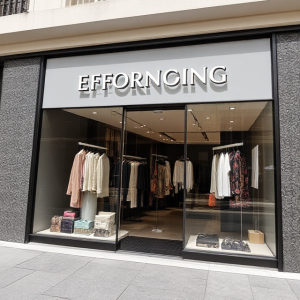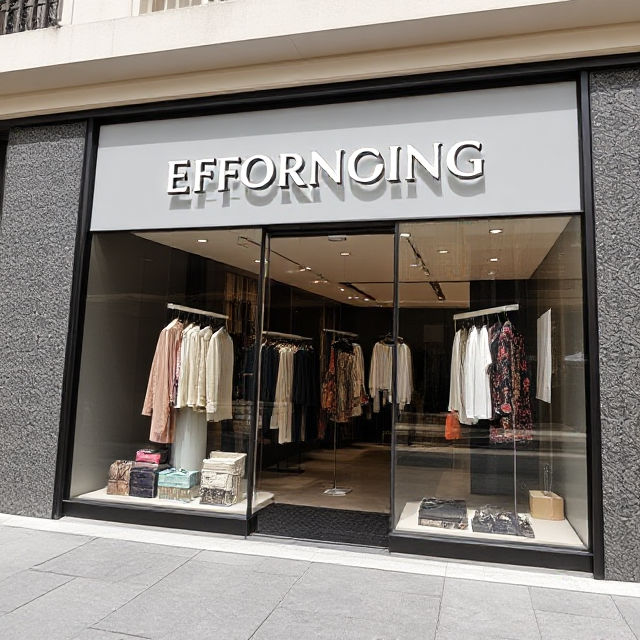
Branding is a powerful tool that can elevate a brand’s image, engage consumers, and drive sales. However, when it comes to affordable fashion, the challenge becomes how to maintain a distinct and appealing brand identity while keeping prices low. Achieving this balance is crucial in today’s highly competitive fashion market, where consumers are not just looking for good deals but also for brands that resonate with their values and needs.
In this article, we will delve into the key elements of branding affordable fashion and explore strategies for building a strong, sustainable brand that appeals to budget-conscious consumers.
1. Understanding the Affordable Fashion Market
Affordable fashion refers to clothing, accessories, and footwear that are priced within reach of a broad demographic, typically targeting consumers with modest incomes. This segment often emphasizes style, functionality, and quality at a price point that doesn’t break the bank.
The market for affordable fashion is vast, ranging from fast fashion retailers to budget-conscious local boutiques. Despite the price point, consumers expect more than just low costs—they want products that align with their personal style, lifestyle, and values. This is where branding becomes key.
2. The Importance of Branding in Affordable Fashion
Branding is not just about creating a logo or catchy slogan. It’s about crafting an experience and a narrative that resonates with consumers on an emotional level. For affordable fashion, branding serves multiple important functions:
- Identity and Recognition: A strong brand identity makes a company memorable, helping it stand out in a crowded market. When done well, branding can turn a simple label into a lifestyle.
- Differentiation: Even within the affordable fashion space, there are many competitors. Effective branding helps differentiate a brand from others, offering a unique value proposition.
- Customer Loyalty: A well-established brand identity can foster customer loyalty, even in the face of new competitors. Consumers tend to stick with brands they trust, which is vital in the price-sensitive market of affordable fashion.
- Perceived Value: A strong brand can elevate the perceived value of products. Consumers may be willing to pay slightly more for a well-branded product that they believe offers quality and aligns with their personal identity.
3. Key Elements of Branding Affordable Fashion
To effectively brand affordable fashion, several key elements must be considered:
a) Brand Identity: Crafting a Clear Message
A brand identity should reflect the core values and vision of the company while being tailored to its target audience. For affordable fashion, this often means creating a narrative that balances style and affordability. Key questions to ask when defining brand identity include:
- What does the brand stand for (quality, sustainability, inclusivity, etc.)?
- Who is the target customer (age, income, lifestyle)?
- How does the brand make customers feel (empowered, confident, trendy)?
A strong brand identity will resonate with the target market and guide decisions related to design, marketing, and customer engagement.
b) Design and Aesthetic Consistency
Affordable fashion brands must offer products that are not only stylish but also consistent with the brand’s aesthetic. Visual elements such as color schemes, typography, and logo design should be cohesive and reflect the brand’s identity.
Consumers often associate certain colors and design elements with specific brand traits (e.g., black for luxury, vibrant colors for youthfulness). By creating a consistent aesthetic, brands can build recognition and trust over time.
c) Sustainability and Ethical Practices
In today’s fashion industry, consumers are increasingly concerned with sustainability and ethical production. Many are looking for affordable fashion brands that strike a balance between low-cost offerings and ethical practices. Brands that incorporate sustainable materials or ethical labor practices in their production are more likely to foster loyalty and appeal to conscious shoppers.
For affordable fashion brands, it is crucial to communicate their sustainability efforts effectively. Transparency about sourcing materials, manufacturing processes, and environmental impact can build a brand image that aligns with consumers’ values without significantly raising costs.
d) Marketing Strategy: Storytelling and Engagement
An affordable fashion brand’s marketing strategy should focus on storytelling. In a market where products can sometimes feel interchangeable, crafting a compelling brand story can forge deeper connections with customers. The story could revolve around the origins of the brand, the people behind it, or the impact it’s trying to make.
Social media plays a huge role in branding affordable fashion today. Brands must utilize platforms like Instagram, TikTok, and YouTube to engage directly with their target audience. Collaborating with influencers who align with the brand’s ethos can also amplify brand visibility and trust.
e) Customer Experience: Building Trust and Value
Customer experience is crucial in branding, especially in the affordable fashion sector, where price sensitivity can sometimes create doubts about quality. Ensuring that customers feel valued at every touchpoint—from browsing the website to receiving their order—helps to establish brand loyalty.
Offering hassle-free returns, fast shipping, and excellent customer service can go a long way in building trust with consumers. It’s also important to keep customers engaged with regular updates, discounts, or exclusive offers.
f) Pricing Strategy: Balancing Affordability and Quality
The price of a product is often the deciding factor for customers in the affordable fashion market. However, a brand must strike a delicate balance between offering competitive prices and maintaining perceived value. Simply lowering prices can sometimes hurt the brand image, especially if consumers perceive the products as low quality.
Brands must find ways to cut costs without compromising quality. This could mean streamlined production processes, smart sourcing, or efficient logistics. Additionally, offering a wide range of pricing tiers or discounts can appeal to a broader audience.
4. Examples of Successful Affordable Fashion Brands
Some successful brands in the affordable fashion space have excelled by mastering the art of branding. Here are a few examples:
- Uniqlo: Known for its minimalist designs, high-quality materials, and affordable prices, Uniqlo has established a brand identity around simplicity, innovation, and inclusivity. Its “LifeWear” philosophy emphasizes functional fashion for all lifestyles, attracting a wide range of consumers.
- H&M: H&M has built a strong brand identity around fast fashion, offering trendy designs at affordable prices. It has managed to stay relevant by constantly updating its collections and embracing sustainability, aiming for a balance between affordability and responsibility.
- Everlane: Everlane’s brand is centered on radical transparency, offering ethically produced clothing at fair prices. The brand connects with consumers by providing clear insights into where materials come from and how products are made.
5. The Power of Effective Branding
Branding affordable fashion isn’t just about offering cheap clothes—it’s about creating a meaningful experience for consumers. When done right, branding can transform a budget-friendly label into a sought-after name. By defining a clear brand identity, maintaining consistency in design, embracing sustainability, engaging in smart marketing, and delivering excellent customer service, affordable fashion brands can build trust, foster loyalty, and thrive in a competitive market.
In an industry that is increasingly driven by conscious consumerism, branding affordable fashion successfully requires staying true to values, offering quality, and crafting an experience that goes beyond just the price tag.
